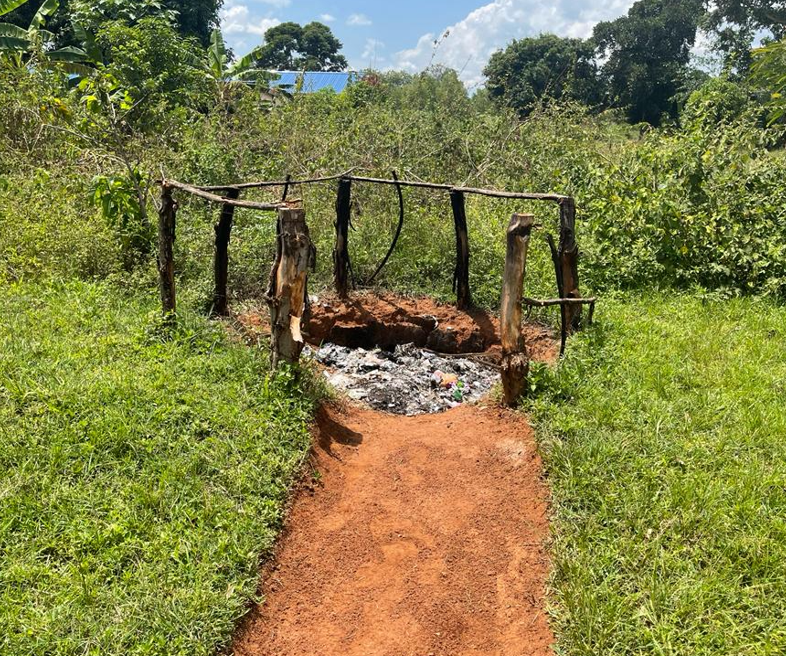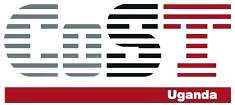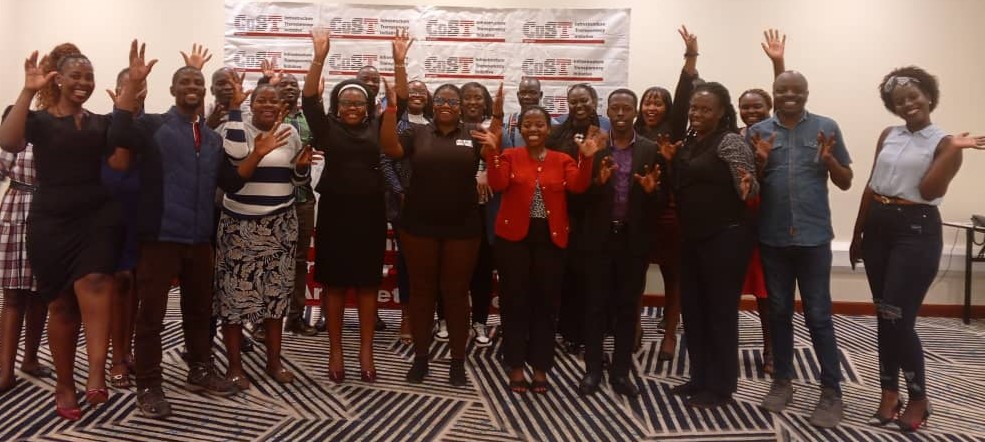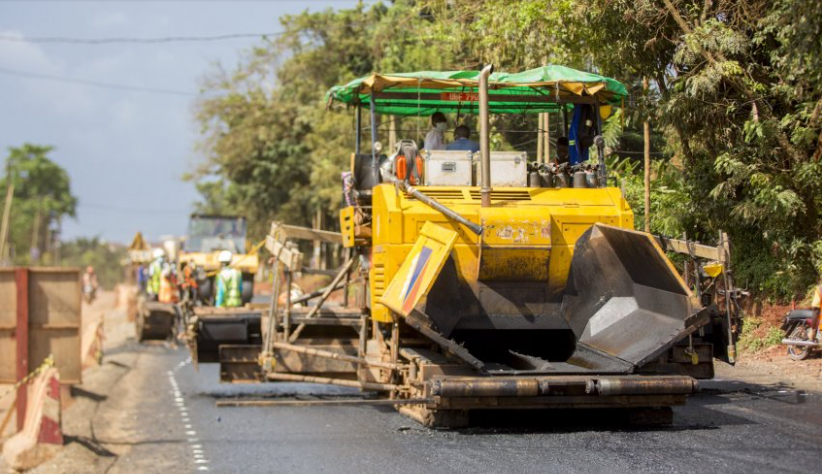
Often times, we have talked about transparency and accountability, in the context of public infrastructure as the opening up of data, and making data owners accountable on how public infrastructure projects are delivered. But transparency and accountability are incomplete when the disclosed data is not made meaningful for the citizens, who are not procurement experts, engineers or a data scientists to make sense out of the ‘’hard data’’ to influence decisions that inform effective delivery of public infrastructure projects. In this blog, our Coordinator, Ms. Olive Kabatwairwe discusses how the CoST assurance process helps governments across the globe realize full transparency, through making the disclosed data speak to the decision making process. Through this blog, Olive reflects of the most recently published assurance report by CoST Uganda, pointing out the key issues observed across the ten projects through the Assurance process, and presenting the call to action, the report makes to stakeholders in Uganda.
Speaking to disclosure of infrastructure data, CoST Assurance processes and data analysis reports have revealed that, in most instances, governments stop at publishing data, more so, using very complex and non-comprehensible standards or formats; and in the end, the data becomes complex and hard to be interpreted by a local citizen who wishes to use such data to monitor upgrade of a health centre three to health centre four in a district such as Bunyanbagu in Uganda, which one of the newest districts and is not registered on the Government Procurement Portal (GPP). This means, data from this district is not proactively disclosed. And everyone reading this can attest to the constraints the public goes through to request for information. With these challenges, it would be therefore of great value to help citizens in such districts to get instant information through the CoST Assurance process.
How disclosed data becomes information
Infrastructure data becomes meaningful when sense has been made out of it. When this is done, the “hard data’’ which cannot be understood becomes user friendly information. CoST does exactly this, through the Assurance process, we make the hard data “speak”. This goes to say that, until the data speaks, even if it is disclosed in millions of tonnes, it may not serve the complete transparency and accountability agenda. The CoST Assurance process is an independent review of the disclosed data by assurance teams based within CoST national programmes. The teams identify key issues of concern in relation to the items listed in the CoST Infrastructure Data Standard (IDS) and put technical jargon into plain language turning complex data into user friendly information. This allows social accountability stakeholders to easily understand the issues and hold decision-makers to account.
Infrastructure data is published across public platforms by public officials designated to do so. This data is published across the value chain of the infrastructure projects including the planning, tendering, construction and maintenance of public infrastructure projects. The major platforms used to disseminate this information can be a CoST disclosure portal where it exists, a Government procurement platform, the media and public entities websites. As revealed in the CoST Uganda 5th Assurance report, the public entity websites were the most used platform. The Ministry of Health disclosed close to 60% of the required data across the disclosed projects on their website, this means that the public can easily secure information about projects the ministry is handling.
Disclosure is important, but how responsive are public entities when the public needs such data to inform their work in regards to monitoring government programmes and projects? We look at the results from the 5th Assurance report in Uganda which indicate that; reactively, the analysis of reactive disclosure demonstrated that majority of the projects had their reactive data disclosed upon request. However, only the Nkombe HC and Bubago HC projects disclosed data on the quality assurance reports upon request. The Mbale, Arua, Mbarara and Lacor Hospital projects under the East Africa Public Health Laboratories Network Project did not disclose any data upon request. It is also important to note that only the Nkombe, Bubago and Buyinda HC projects under UgIFT disclosed project evaluation reports under completion data, project design reports under tender management data, specifications and drawings under contract data and list of escalation approvals under implementation data.
Lack of full disclosure affects the analysis and in the end citizens will never know certain issues that influenced decisions entities made, or why some projects delay being completed for instance; in the 5th Assurance report, Mbale Regional Referral Hospital registered time overruns of 18 months, while, engagements across the other nine projects revealed that progress of works was low compared to the expectations indicating possible time extensions for Arua, Kyebando, Kitabazi, Kifamba and Bubago Health Centres among others. In addition, full disclosure enables decision makers to understand certain issues from a lay man’s perspective. For instance the 5th Assurance report indicated that one of the programmes the East African Public Networking Laboratory projects suffered cost overruns of Ugx 2,571,393,446 for the Mbale Regional Referral which registered a cost overrun of UGX 831,756,598, Arua RRH UGX 859,919,331, Mbarara RRH UGX 792,017,517, while Lacor hospital registered an overrun of UGX 87,700,000. The report further notes that, these overruns were majorly due to changes in specifications at design stage.
Despite the fact that project implementation across all sectors was affected by the CoVID-19 pandemic, there were inherent factors that perpetrated project delay. For instance, the Kyebando, Kitabazi, Kifamba, Bubago and Mbale projects experienced delays in tendering and construction due to the COVID-19 lockdown. In addition, the report also pointed out that, as a result of the delays in project procurement, the Kyebando, Kifamba and Kitabazi projects reported a delay to start. This resulted from the need for customization of the designs and requirements to the sites. Similarly, the Mbale, Arua, and Mbarara projects realised scope changes that affected the tendering process and led to budget amendments. These findings also indicate possible gaps at planning stages of the project for instance, lack of effective feasibility assessments. This has a budget implication, but also calls for action by decision makers within the entities to improve their internal systems regarding proper design of projects.
Through the Assurance process, we are able to tell which projects are being implemented, how much is being invested, the progress of projects, understand issues of inclusiveness, which companies are responsible for the projects and issues of competition – over time when more projects have been assured. Stakeholders are able to establish which companies keep winning particular projects in particular entities or sectors and what could be the influencing factors. Compliance or deviations with the legal and policy frameworks on construction management and public procurement such as which methods are used frequently to procure projects. We are also able to establish construction management/quality issues; compliance with health, safety and environmental management safeguards among other issues that directly affect project performance.
Results from the 5th Assurance report for CoST Uganda further reveal that, the ten projects[1] were worth Ugx. 71,279,389,380 approximately USD 19 Million with the exception of one project (Lacor) whose financial details were not disclosed. These projects included those funded by the Government of Uganda and the International Development Association (IDA) under the World Bank Group. Citizens need information regarding the investments made into public infrastructure development, to be able to appreciate where their taxes are going, and follow their money. But also, information on who funds the projects is important especially, when loans are taken in the interest of service delivery.
Sometimes, the public blames entities when projects are delayed, because of lack of clarity on roles and responsibilities of entities on projects, especially now that governments like Uganda are implementing most projects under the Programme based approach[2], the assurance process helps clarify such anomalies. For instance the 5th Assurance report notes that for the UgIFT projects, the responsibility of the Ministry of Health was in Project Identification and Project preparation while Procurement and implementation was handled by the respective Local Governments, with Ministry of Health as a participant. Therefore, for the Uganda Inter-Governmental Fiscal Transfer project (UgIFT), the Ministry of Health was only assessed against the Project Identification and Preparation data points.
Beyond this, the assurance also helps shine a light on key construction concerns, that procuring entities are likely to miss out during their routine monitoring visits, or issues that never find their way in the monitoring reports. For instance the 5th Assurance report pointed out that;
- Inadequate stakeholder engagement were reported at the Mbale, Arua and Mbarara projects. The field findings indicated that there was lack of evidence that stakeholders for instance the hospital administration officials were not fully aware about the project implementation and therefore, could not ably talk about the status of the projects.
- There were no quality control measures disclosed or observed for the Mbale, Arua, Lacor and Mbarara projects.
- Noted inconsistencies on health and safety reporting in the report from the district engineer and the contractor, the district engineer’s progress report for August 2021 indicated a total of 5 accidents were reported at Nkombe HC including one category 1 fatality (death), one category 2 with major injuries whereas three were under category 3 with minor injuries and the contractor’s report indicated that there were no accidents recorded on the project. In addition, the District Engineer’s report of August 2021 indicated that, there was one theft case and two occupational illness cases.
- At Arua regional referral hospital, connection to electricity was not completed at 90%, compound required weeding, emergency exit was not fully done, there were no site reports at the facility, structure was yet to be completed, no sign board, observed some little cracks and rough surfaces on the worked terrazzo floor and wall.
- At Mbarara regional referral hospital, the doors lacked kick plates, were too hard to open, noticed poor workmanship for joinery at the reception, use of single swing doors contrary to double leaf doors required in health facilities, no wall guard, and site hand over was not done.
- While at Lacor regional referral hospital, the health facility was constructed by the hospital’s construction team, however, not all sections were remodeled.
- Observed an open-air incinerating pit at Buyinda HC which is detrimental to the environment.
In conclusion, disclosure alone is not a means to the end if we want better service delivery in the infrastructure sector. It takes a series of interventions including making sense out of the disclosed data, mostly through the assurance process, turning the complex data into information for stakeholders to understand and use it. And make recommendations on what needs to be done to address the issues observed from the disclosed data. The CoST Uganda 5th Assurance report recommended that;
- Ministry of Health strengthens documentation, archiving and publication of project and contract information such as project reports, evaluation reports, list of bidders and audit reports. This should include status of action on recommendations from these reports.
- The communications and procurement teams of the Ministry of Health and the local governments should make efforts to regularly collect and publish proactive data through the E-GP and GPP and other public platforms in the interest of promoting transparency.
- Ministry of Finance and PPDA are encouraged to fast track development and roll out of the E-GP across all entities to increase disclosure of critical project and contract data across all stakeholders. The EGP should also be aligned to international data standards to enhance its credibility in information management and disclosure.
- Ministry of Health should put in-place an emergency project management plan in response to delays that arose from the CoVID-19 pandemic and procurement. Successful strategies include; the use of Integrated Project Delivery (IPD) as an innovative delivery system promoting transparency, accountability and trust among stakeholders.
- Fast track implementation of work schedules, supervision of execution of works across all the projects to mitigate cost extensions, strengthen compliance, data verification and reporting on health and safety requirements and improve project planning and initiation processes such as feasibility studies to inform effective designs and budgeting.
- While some QC measures were observed, the QA/QC processes need to be strengthened. The MoH is encouraged to put in place a Quality Information Management system that would enable her better monitor and manage the quality processes. The use of Open-air incinerator pits should be replaced with alternative sustainable solutions such as Drum or Brick incinerators.
- The Department of Health infrastructure is encouraged to fast-track the development and launch of the Quality Information Management system for infrastructure projects.
- The MOH is encouraged to inspect the sites, work with contractors and consultants to identify the snags and rectify them.
[1] UgIFT projects (Nkombe Health Centre (II) – Mayuge district, Bubago Health Centre (II) – Kamuli district Buyinda Health Centre (II) – Kaliro district); URMCHIP projects (Kyebando Health Centre – Kibaale district, Kitabazi Health Centre – Masaka district, Kifamba Health Centre – Rakai district); East Africa Public Health Laboratories Network Project (EAPHLNP) – Construction of satellite laboratories FY 2019/20 (Mbale Regional Referral Hospital, Arua Regional Referral hospital, Mbarara Regional referral hospital, St Mary’s Lacor Hospital)
[2] The programme-based approach emphasizes comprehensive and coordinated planning in a given sector or thematic area of intervention, or under a national poverty reduction strategy. For these projects, the UgIFT programme will be implemented by the Ministry of Health (National Government) and respective districts (Local Government). Different stakeholders will play different supervisory key roles at the different stages of the project.



